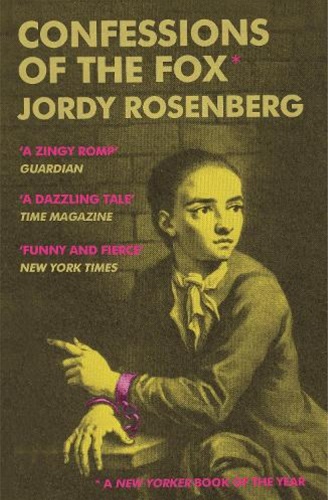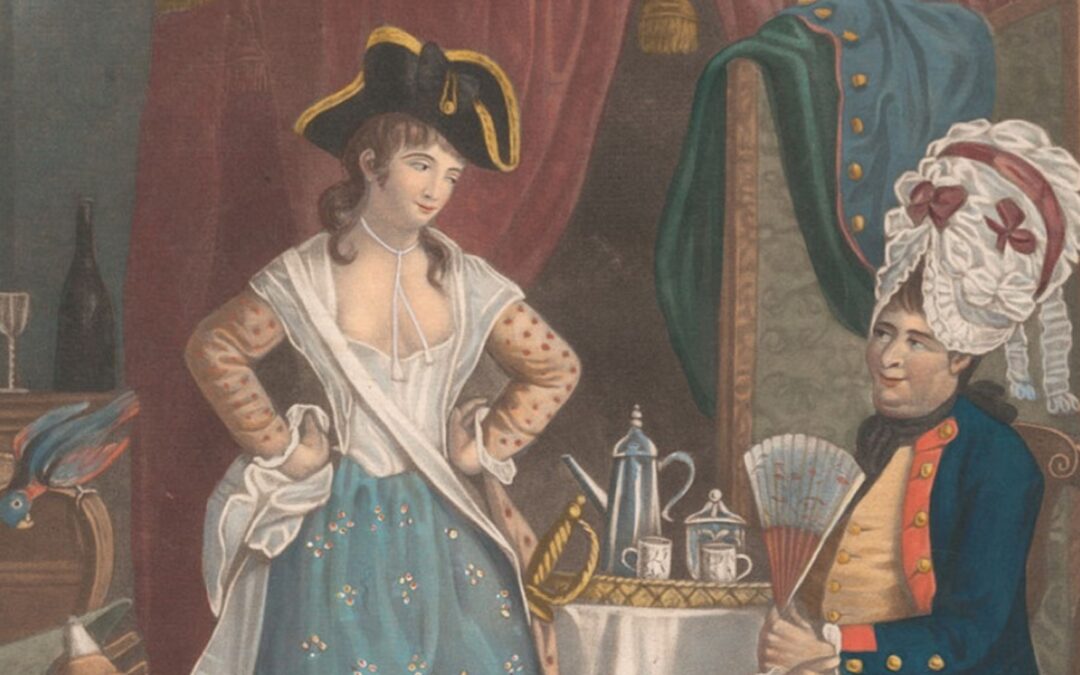Bibliography of British and Irish History (BBIH) Sexual and Racial identity intern, Dr Leah Veronese, discusses how the BBIH can be used in the classroom: she outlines an undergraduate seminar she has designed and taught on eighteenth century representations of queerness.
My eighteenth-century undergraduate seminar ‘Be Gay Do Crime’ was inspired by an affecting moment of contact with queer history when using Rick Norton’s online Homosexuality in Eighteenth Century England: A Sourcebook. Norton has a section of the sourcebook dedicated to the infamous raid of Mother Clap’s molly house in 1726. The violent invasion of queer space had its own immediate pain, however, I was also more positively struck by a detail earlier in the history of the molly house. Norton describes ‘The Marrying Room’:
Her special room was also a feature of other molly houses. It was sometimes referred to as ‘The Marrying Room’ or ‘The Chapel’, and usually it contained a large double bed. Though no ordained minister seems to have officiated at the nuptials celebrated therein, in Mother Clap’s molly house there was at least a kind of marriage attendant, by the name of Eccleston (see trials of Clap and Lawrence). He stood guard at the door to guarantee the occupants’ privacy if they so desired. Often, however, the couples did not bother to close the door behind them, thus allowing others to witness the carnal rite. As a general rule, ‘when they came back they would tell what they had been doing, which in their Dialect they call’d Marrying’. (See trials of Clap, Lawrence, and Griffin.)
The potential for voyeurism is obvious, and also the playful burlesque of the social justification for heterosexual sex. Nevertheless, as I read, I wondered whether this little ritual of the molly house might not have perhaps represented a personal form of marriage for some queer people, from which they were otherwise denied access. This touching emotional contact with the queer past reinforced to me the importance of drawing attention to queer history in the classroom, allowing students access to their own history, and directing them where to find it.
My seminar ‘Be Gay Do Crime’ focuses on the intersection between eighteenth century criminal and queer spaces. As it is a literature seminar, in advance students read John Gay’s The Beggar’s Opera and Jordy Rosenberg’s Confessions of the Fox. Rosenberg’s novel explores a trans academic’s archival discovery of a trans memoir by Jack Shepherd—the highwayman whose celebrity was an inspiration for The Beggar’s Opera. Rosenberg’s novel vividly brings to life a queer eighteenth-century world, whilst reflecting on the complexity of negotiating our emotional investment in queer history as queer academics. This in turn is helpful for reflecting on the challenges of using Rick Norton’s sourcebook.

Before the seminar, each student chooses a source or case study from Norton’s sourcebook. They prepare a short, 5-10 minute presentation considering what spaces are associated with queerness, and how and why queer people are presented in the source. In the first half of the seminar students present their research, and we begin to draw out the common patterns between their chosen sources. In the second half of the seminar, we put these sources back into conversation with John Gay and Jordy Rosenberg—thinking about the prisons and taverns of The Beggar’s Opera and how these spaces overlap both with our eighteenth-century sources and with Rosenberg’s novel. This work crucially highlights the presence of queer lives in the period for students, and how they might overlap with more familiar canonical material.
The BBIH would be an excellent bibliographical companion for this session, allowing students to broaden their understanding of their chosen case study beyond the Rick Norton sourcebook. The BBIH’s ‘Advanced Search’ has several filtering options which would allow students to narrow down secondary sources:
- Date range field: allows students to search only for eighteenth century-related material.
- Place-name tree: given the session’s spatial emphasis, the place-name tree allows students to specify the geographical location of their source, for example London.
- Person as Subject field: given that several of Rick Norton’s case-studies are related to individual people, the ‘Person as Subject’ field enables students to search for secondary material specifically focused on their chosen person.
- The Subject tree: a network of 8,000 related search terms with which students can navigate the database. The Subject tree has a branch specifically related to queer history, allowing students to research for their presentation, but also giving them a wider sense of the field of queer studies. As an intern at the BBIH I have also been working on a training video on how to use the BBIH to research queer history, which should be hitting the IHR YouTube channel soon…
This specific seminar was given in the context of an undergraduate eighteenth century literature course, which is why it returns to literary sources. It could, however, easily be adapted for a history seminar. Norton’s sourcebook would, in and of itself, also offer an opportunity for historiographical debate. The basic model of focusing on queer spaces, and who is representing queer people in sources and why, could easily be transported to other periods in history. The use of the BBIH in this seminar could be widely transferred to other similar tasks requiring students to independently research a topic. Signposting them to such bibliographical tools as part of their seminar work will help them in the long term when they come to independently research end-of-module coursework or their dissertation.
My students have appreciated the attention to queer history in this seminar. I have also valued this seminar, both as an opportunity to make queer history visible to my students and also to make myself visible to students as a queer person in academia.
Dr Leah Veronese researches early modern literature. Her AHRC-funded DPhil thesis (Balliol College, Oxford) focused on the rhetoric of petition—both a type of letter of request and prayer of request. She explored what rhetorical use early modern writers made of this double meaning, in petitionary letters and across other forms of early modern writing. She is currently developing a new research project on John Donne’s use of architectural metaphors, working across Donne’s poetry and prose to create a taxonomy of the types of spaces he refers to in his figurative language and to what purposes he puts them. She has taught undergraduate literature papers on the early modern period, Shakespeare, and the long eighteenth century at Balliol College and Lincoln College.


